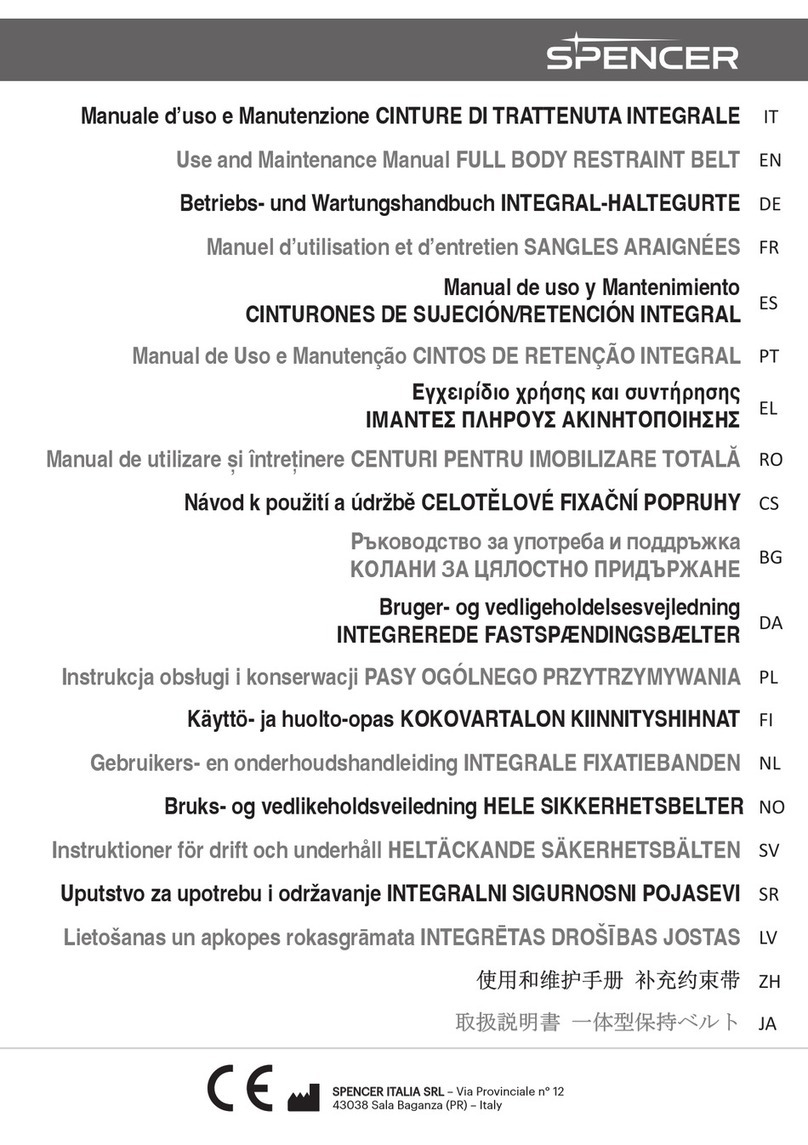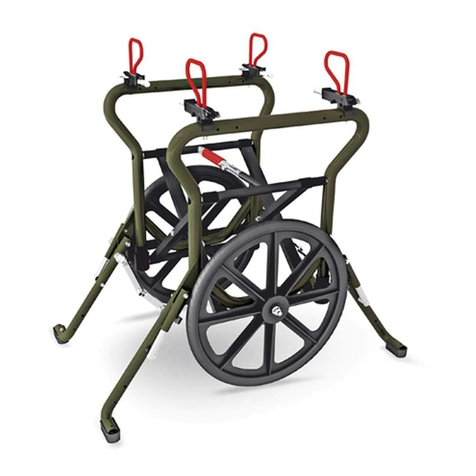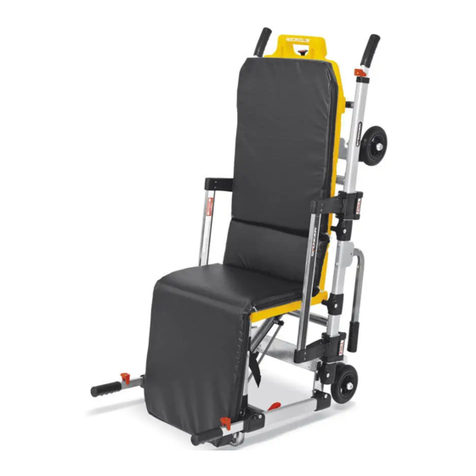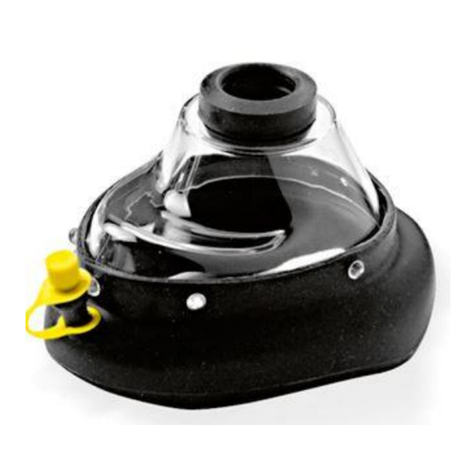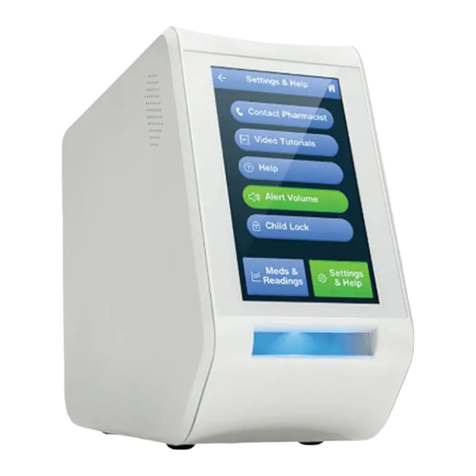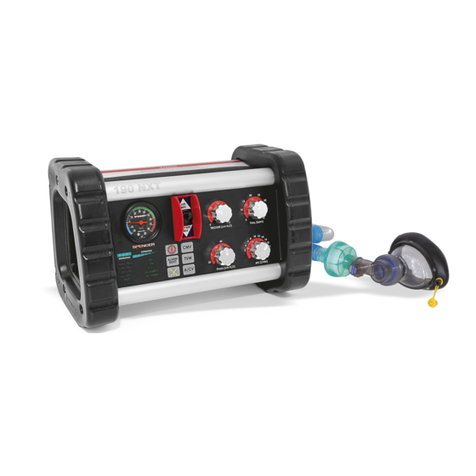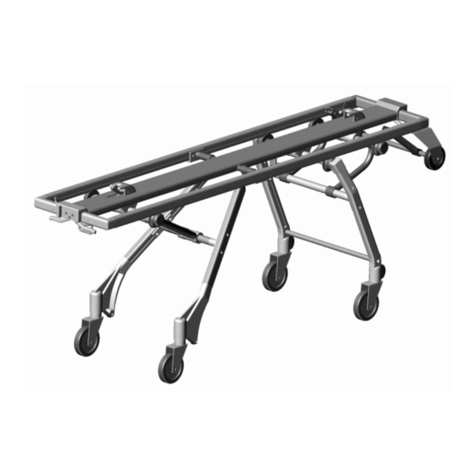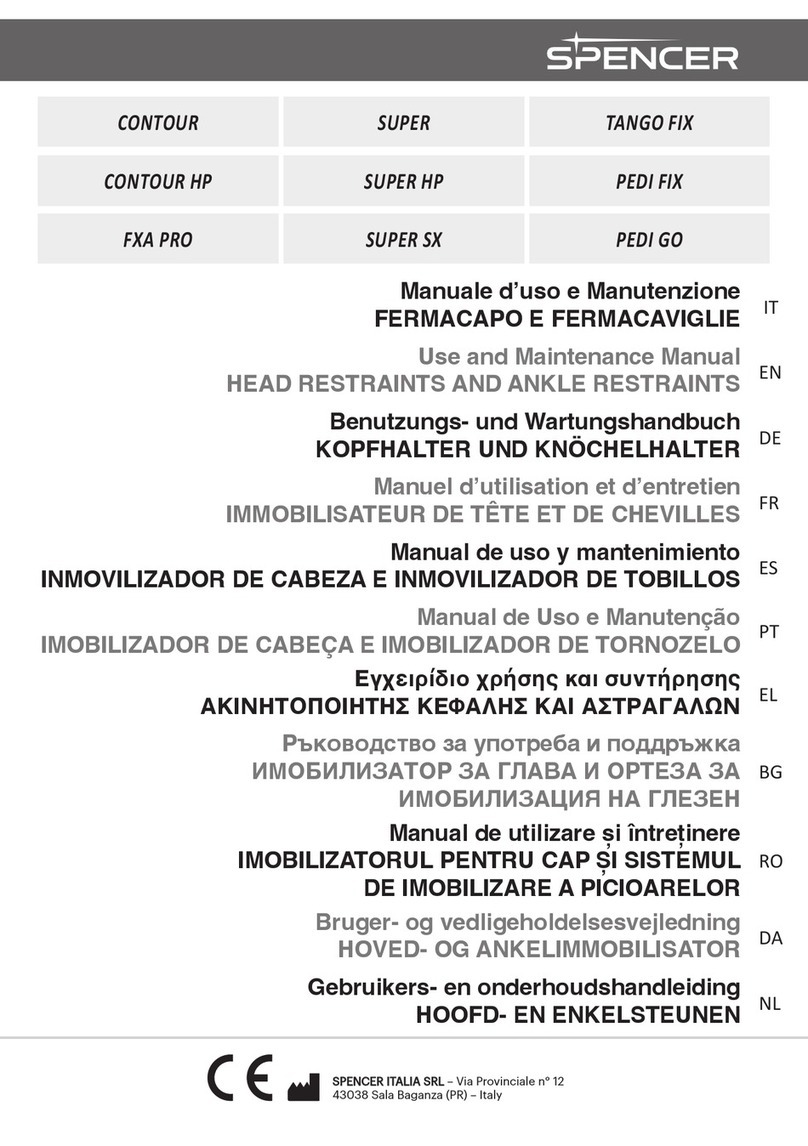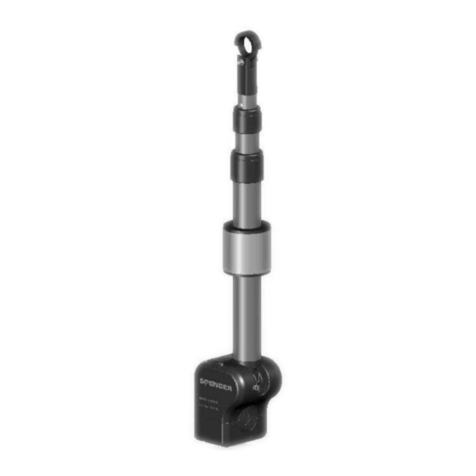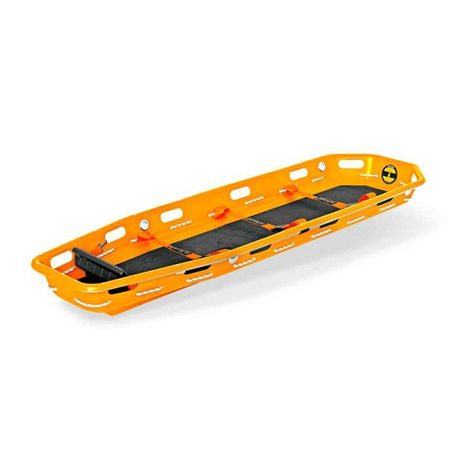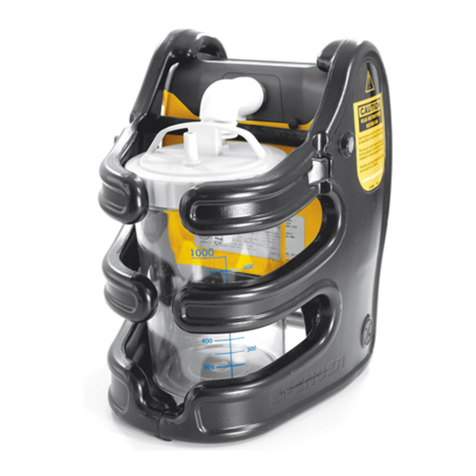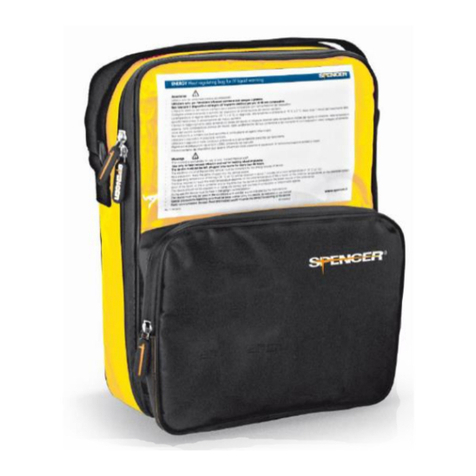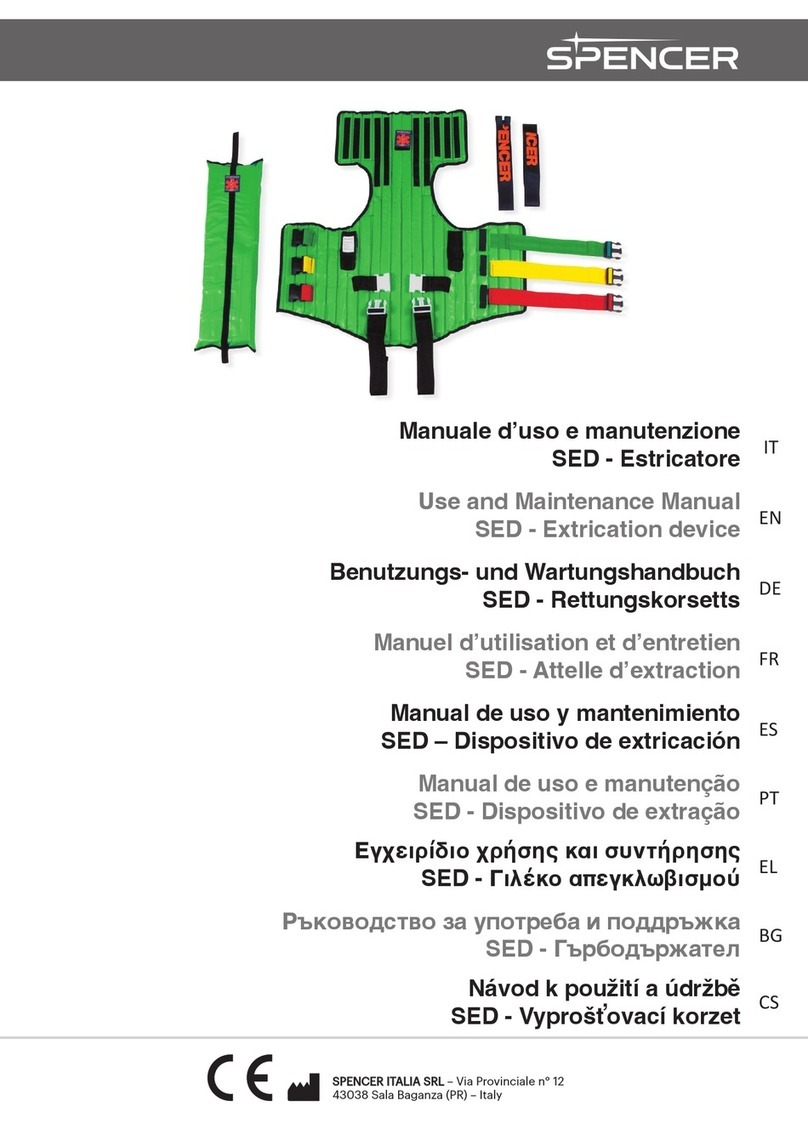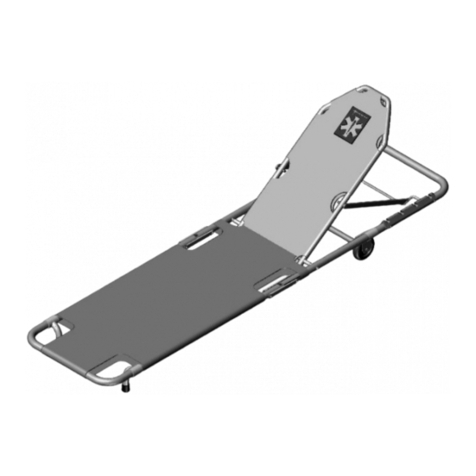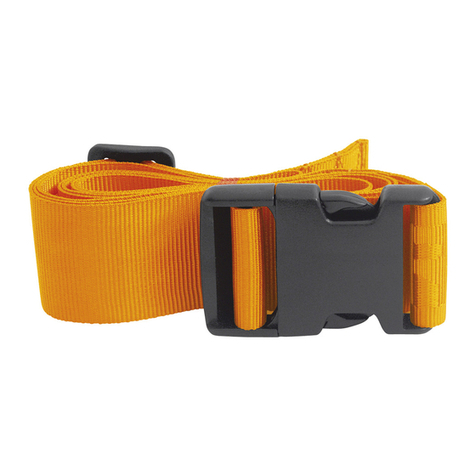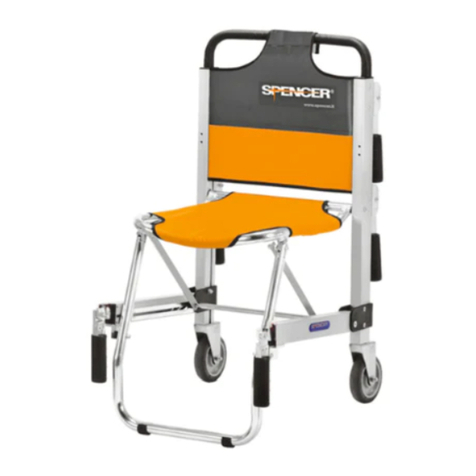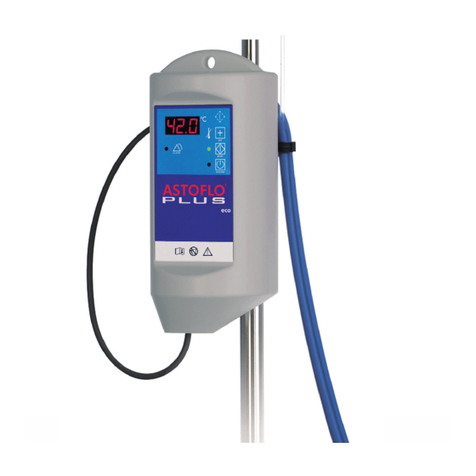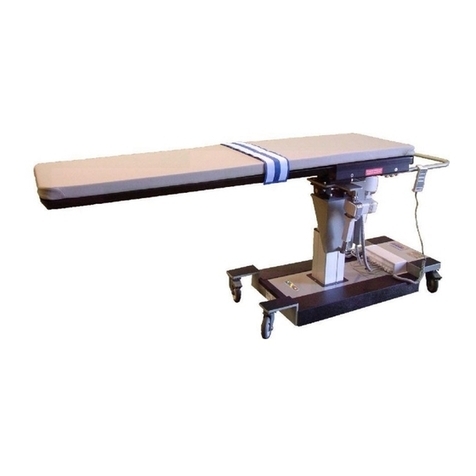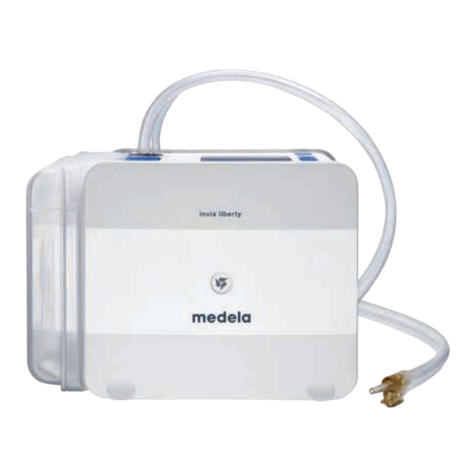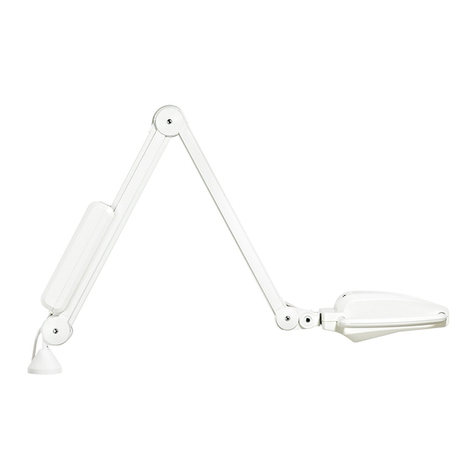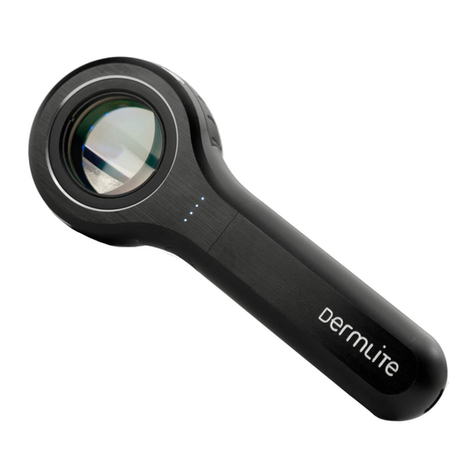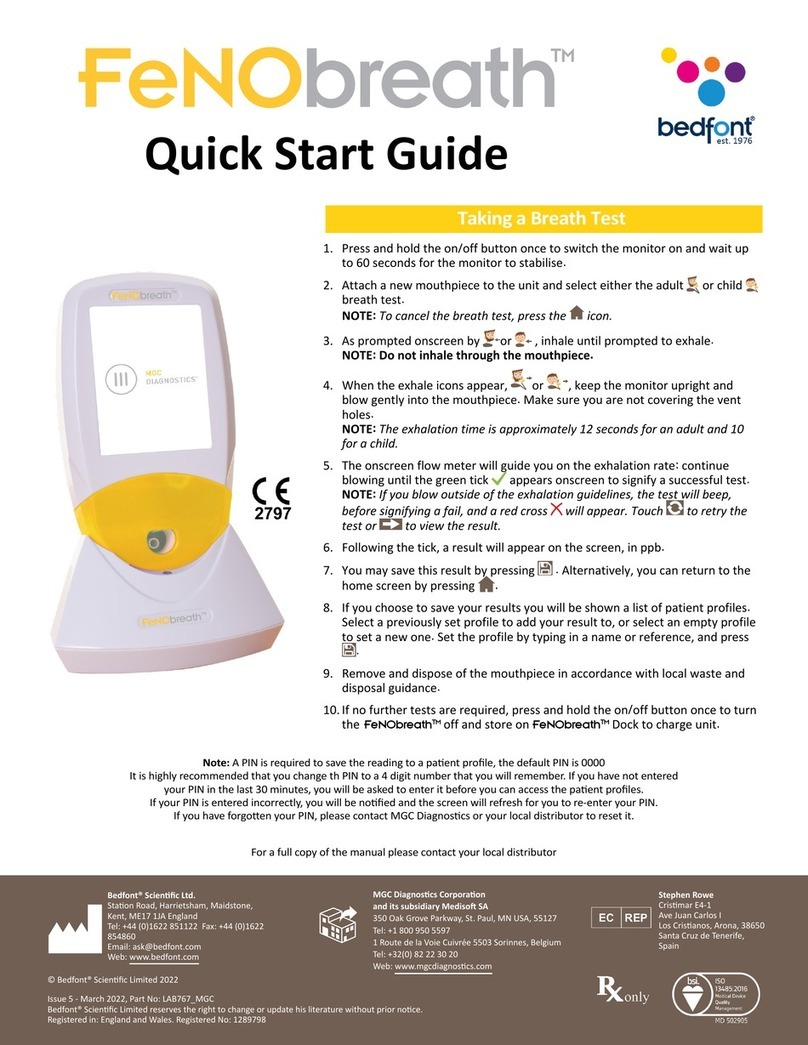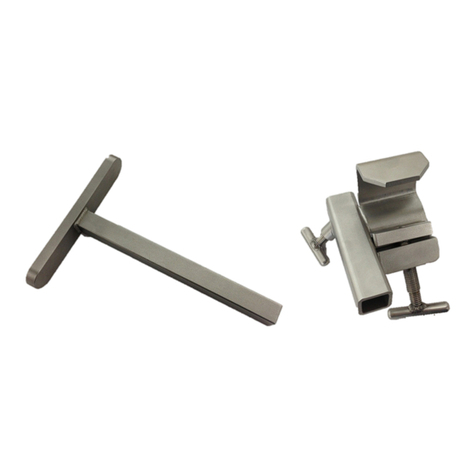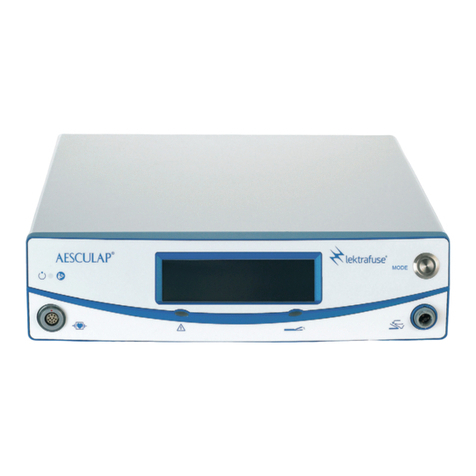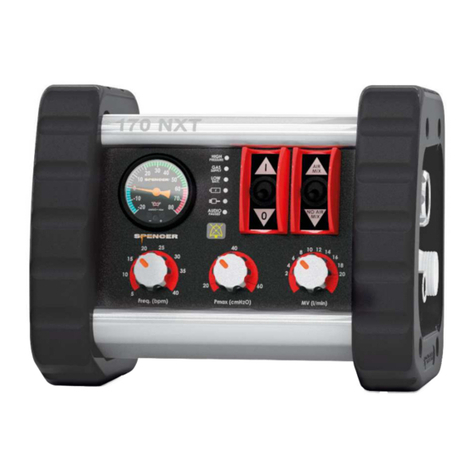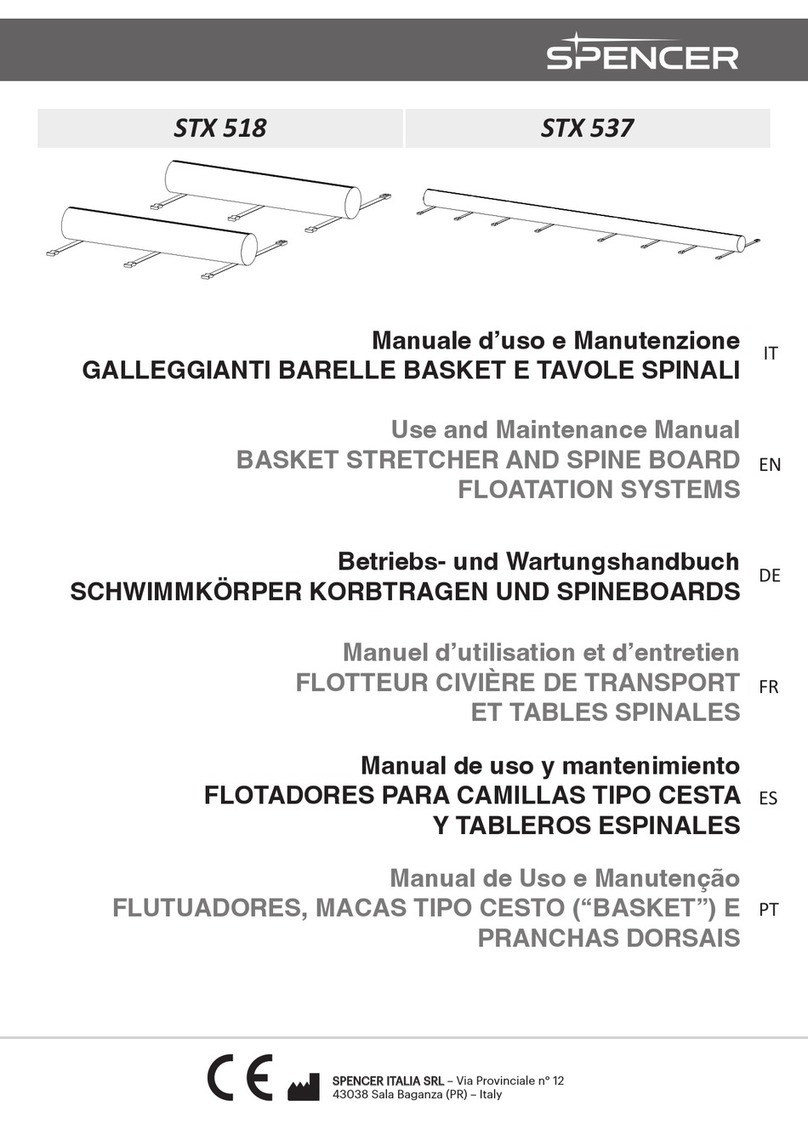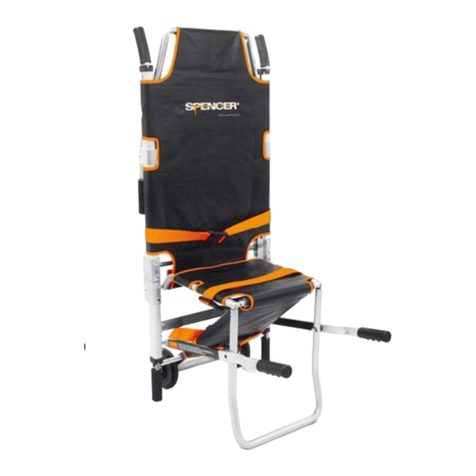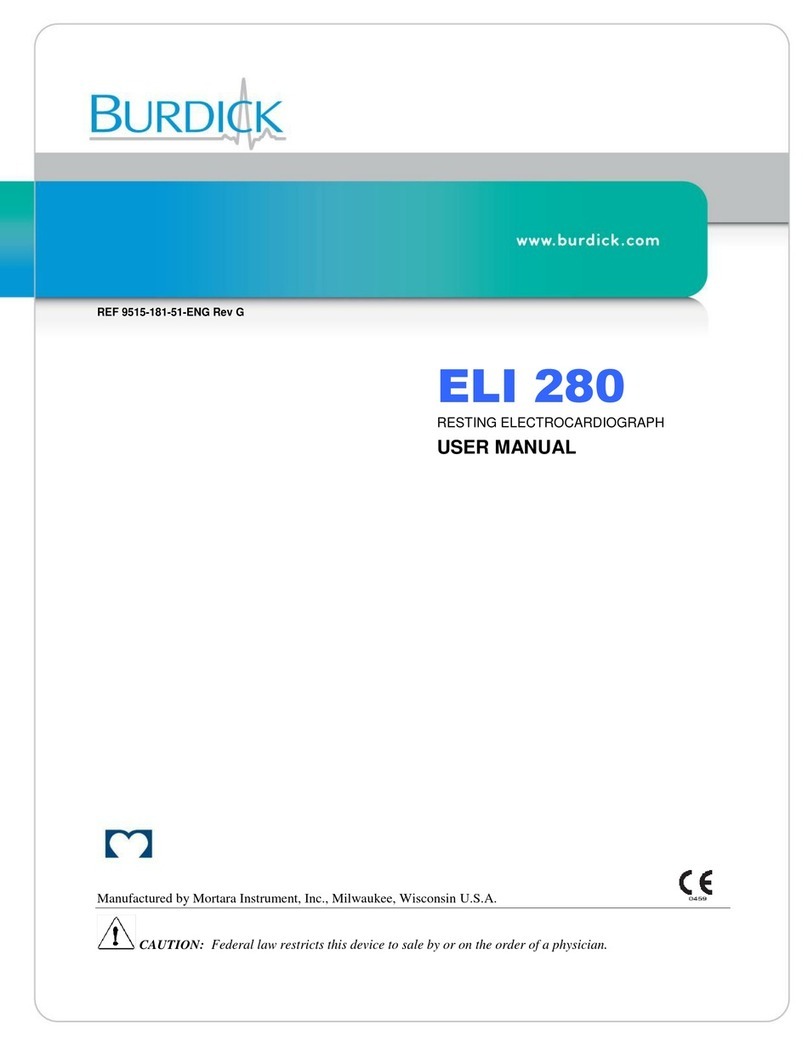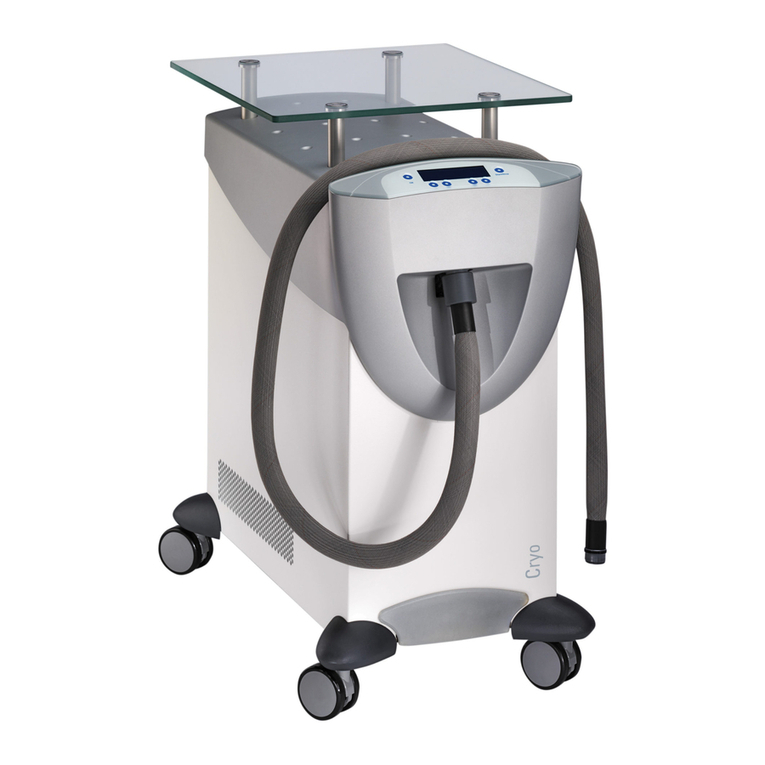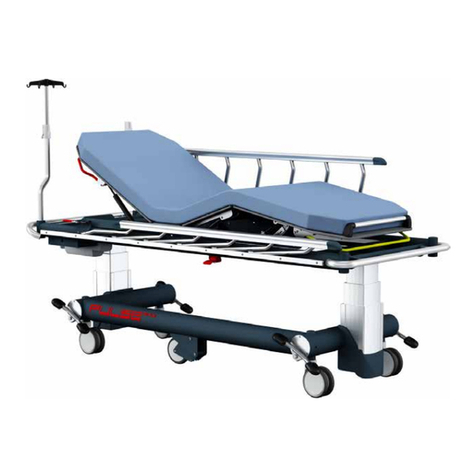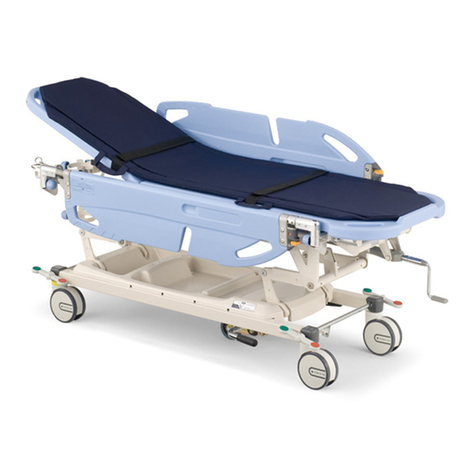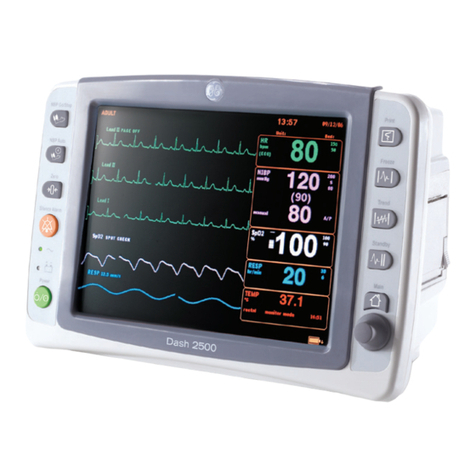
4
•Training routines must be registered on a special register in which the names of those trained, of the trainers, date and
place are indicated. This register which will certify the eligibility of the operators to use the Spencer device has to be kept
for a period of 10 years after the disposal of the device itself. This register will be made available to the Competent
Authorities and/or Manufacturer if requested.
•Use only accessories/spare parts that are original or approved by Spencer Italia S.r.l., in order to carry out any operation
without causing any alteration or modification to the device, otherwise we assume no responsibility for the proper
functioning or damage resulting from device to the patient or the operator and warranty and will be considered void
according to the compliance to the Medical Device Directive 93/4 /CEE.
•Always respect the maximum capacity of the device, as indicated in this user's manual. Maximum load capacity means
the total weight distributed according to the human anatomy. In determining the load of the total weight on the
product, the operator must consider the weight of the patient, the equipment and the accessories. Moreover, the
operator must consider that the overall dimensions of the patient do not reduce the functionality of the device.
•Never leave the patient unassisted on the device, because he may be injured.
•The device and all its components, after washing, should be allowed to dry completely before storing.
•Lubrication must be carried out after cleaning and complete drying.
•Avoid contact with sharp objects.
•Do not use the device if it is pierced, torn or frayed.
•Make sure, before lifting, that the operators have a firm grip on the device.
•Avoid pulling the device on rough surfaces.
•The device is a trolley for patients transport and cannot be used as a stationing device.
•First practice with an empty trolley in order to get used to the way in which the trolley manoeuvres.
•For the use of the device, at least two operators in suitable physical conditions are needed; they must therefore
have strength, balance, coordination, and common sense and must be trained on the correct functioning of the
device Spencer trolley.
•For techniques for loading particularly heavy patients, for rescue operations on steep ground or in unusual circumstances,
it is recommended the presence of more operators (not just two as required under standard conditions).
•The maximum weight sustained by each rescuer must comply with requirements prescribed by the law of the
Country, concerning Health and Safety at Work.
•Before each use, check the integrity of the belts and their hooks, as specified in the User’s Manual. In case of malfunction
or damage that may compromise the function and safety of the device, patient or operator, it is necessary to replace the
belts.
•Make sure the belts are properly fastened to the frame of the stretcher.
•In order to meet the requirements of the standard UNI EN 1789, use only belts that have as anchor point the frame of the
stretcher.
•To optimize patient’s immobilization, is necessary to use a thorax belt secured to the frame of the stretcher in addition to
the supplied ones.
•Make sure the mattress is properly secured/anchored to the frame /patient board of a trolley.
•Make sure the sheet does not interfere with the footrest and do not prevent the operator from handling of the sidebars.
•Do not operate in case the weight has not been distributed correctly.
•The sidebars may be damaged due to improper use. Keep the sidebars always raised during patient transport.
•Always grasp the structure to lift and carry the trolley and not the sidebars or polyethylene boards.
•Avoid extreme force during the loading procedure of the trolley on the ambulance. Too much force may have negative
effects on the functioning of the trolley.
•Keep the trolley firmly if the patient is sitting.
•Use the trolley only as described in this user's manual.
•Do not alter or modify the trolley arbitrarily to make it fit into the ambulance: the modification may cause unforeseeable
functioning and damages to the patient and operators. In any case the warranty will be lost.
•Pay a lot of attention to possible obstacles (water, ice, debris, etc.) on the route of the trolley, because they could
cause loss of balance for the operator and compromise the proper functioning of the device. If you can not set the path
free from obstacles, choose an alternative path.
•For gradients greater than 10 mm, the device must be raised, taking care to grasp the structure and not from the
banks/platforms.
•Condensation, water, ice and accumulations of dust can affect the correct operation of the device, making
it unpredictable and causing a sudden alteration of the weight that operators have to carry.
•The self-loading trolleys are certified for use with dedicated Spencer fastening systems, it is therefore forbidden the
use of fasteners not approved by the Manufacturer. Fastening systems that have not been approved may alter
the structural and functional characteristics of the trolleys.
•Once positioned the wheels of the loading trolley on the support surface of the ambulance, the wheels of the front
leg must have a distance from the ground of at least 6 cm. Check regularly the loading height of the ambulance; if it is
altered, the trolley must be immediately set up by the Manufacturer or by an authorized centre. Otherwise we assume
no responsibility for the proper functioning or damage caused by the device itself.














